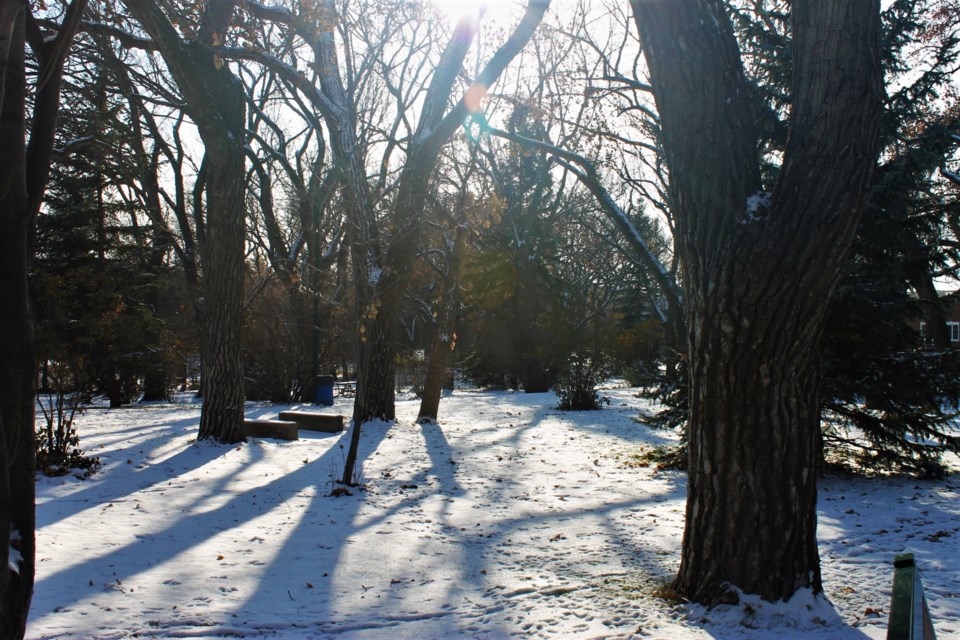There are enough trees in Moose Jaw to provide oxygen for 60,000 people, so the parks and recreation department wants to protect that urban forest since it would be difficult to replace.
The municipality looks after 15,000 trees, which are worth $90 million to $100 million, according to a departmental report. The department attempts to plant a new tree for every tree it removes, with every new tree ideally pruned about three years after planting and again about seven years after planting.
Pruning ensures trees remain strong, reduces the risk of dying when they are mature and increases their longevity.
To do this, the parks department requires dedicated year-round staff, the report said. A part-time in-house tree-pruning crew trims mainly in November, January, February, March and April. There are seven departmental staff in the winter who have to balance work on outdoor rinks, pathway snow removal, cemetery operations and tree maintenance.
To address this concern, the parks department is asking city council to spend $60,035 in the 2020 budget on the urban forestry program. This would consist of $45,850 to hire a year-round, two-man urban forestry crew, with an additional $14,185 to expand the contracted block pruning program to help decrease the municipality’s tree pruning cycle to 14 years instead of 33 years.
Council discussed the request during its special budget meeting recently and voted 6-1 to table the motion until the entire budget is finalized. Coun. Heather Eby was opposed.
Council discussion
Eby thought it was “pretty phenomenal” that Moose Jaw has such a large urban forest. She remarked on its beauty, especially when she drives north across the Ninth Avenue bridge from South Hill and sees the many different trees.
“Most of those trees were planted by someone at some time. They planted them to benefit us,” she continued.
This was one program that was easily eliminated during budget discussions last year when council told the departments to find savings when it should have made the decisions itself, Eby said. However, she believed it was important to have such programs, especially since council needs to be a good steward of all infrastructure.
Moose Jaw used to have a municipal tree commission that suggested policies and monitored a dedicated tree program, said Coun. Brian Swanson. There was never a motion to reduce the community’s tree inventory or tree pruning, but that obviously “kept getting sliced and diced” in budgets.
Background
Adding a year-round urban forestry crew would result in an additional seasonal employee being added to the department from May to October, while from November to April, one of the existing crew leads would replace the seasonal employee to maintain the two-person crew, explained parks director Derek Blais.
Increasing the funding for contracted block pruning would allow the in-house forestry crew to focus on other areas such as responding to service requests, removing deadfall, planting trees, removing stumps, conducting tree inventories and inspections, and watching for Dutch elm disease, Cottony Ash Psyllid, and the future threat of the emerald ash borer beetle.
The current program has pruned 1,355 trees during the past seven years. In-house block pruning costs $150 per tree. The annual budget for contracted pruning — with the additional request for next year — is $62,000.
Contractors performed most of the pruning this year due to a shortage of qualified in-house staff, said the report.
With an expanded urban forestry program, in-house crews could prune 600 trees per year — from 200 — while contracted block pruning would hit 500 trees per year, an increase from 260, for 1,100 pruned per year.
“Trees are an integral part of our community, especially because of our geographical location. They provide many social, environmental and economic benefits to our community that we often don’t consider,” Blais said. “It is uncommon for a city of our size and the amount of trees we have not to have a dedicated team to urban forestry.”
The next special budget meeting is Dec. 4.




